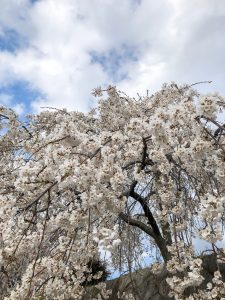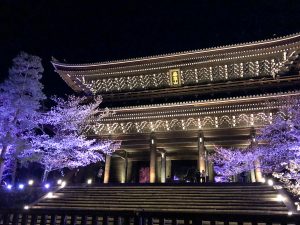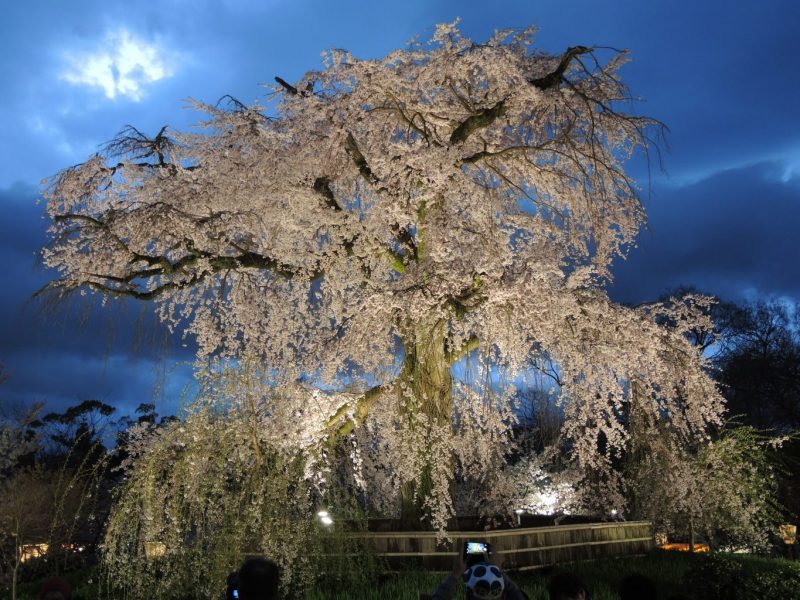In Japan, we are so in love with cherry blossom flowers that we have used scientific technology to accurately determine what exact day these flowers will blossom in what area and what exact their petals will fall in what area. We are crazy about cherry blossoms! There are researchers and meteorologists who monitor the temperature and other factors to determine the schedule of the blooming of cherry trees in particular areas so that people can fix their schedule for cherry blossom viewing.
During the months of March and April, many people all over Japan go out to admire the cherry blossoms in full bloom. We spread mats on the ground under the blossoms and have parties with their family or co-workers.
Cherry blossoms are viewed as symbols of the samurai life because they know when to show off and when to put an end to their lives. Normally, people associate flowers with women. But, in Japan, this is not the case. We consider cherry blossoms manly because they bravely face death. The way cherry blossoms scatter from the trees impresses us as graceful as samurai who were taught to die bravely.
One hundred years ago, 100 cherry trees were presented to Washington D.C. by a mayor of Tokyo. Then, Americans sent us their American dog-wood trees in gratitude. The friendship did not last long because 30 years after the gift, there was a war between the US and Japan. But now, we are friends again!
There are two types of cherry blossoms trees: fruit-bearing and flower-blooming. The nutrients in a flower-blooming tree are not enough for it to produce fruits. So, when a cherry tree produces fruits, it doesn’t procedure flowers. Although you can see some cherries on some flower-bearing cherry trees, they are not edible. They are too small to eat.
Regarding flower-bearing cherry trees, here are no wild cherry trees. Somebody has to plant them. Otherwise, they wouldn’t grow naturally. They are beautiful but dependent on humans.







